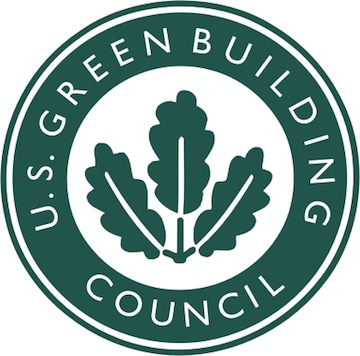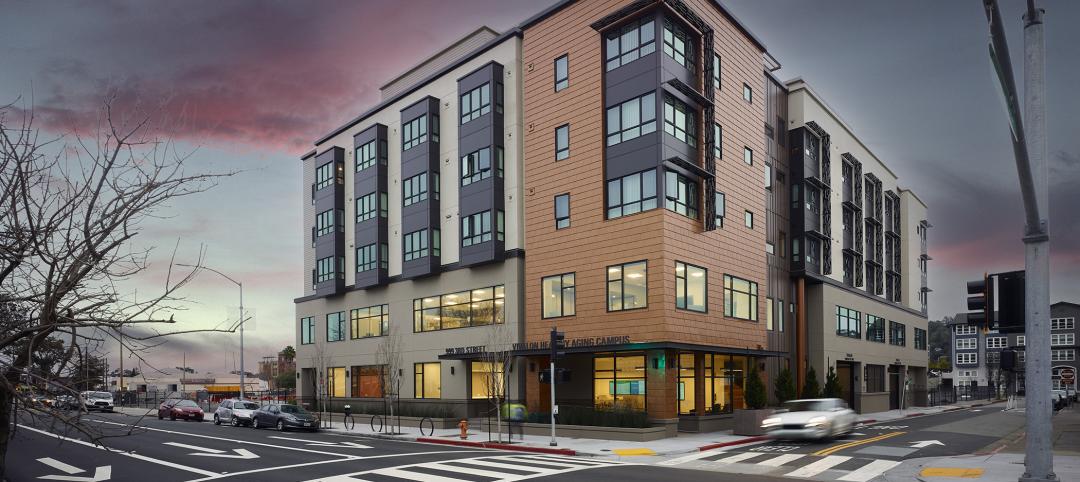The U.S. Green Building Council (USGBC) has released its annual list of the top 10 states for new LEED certifications in 2012, highlighting those regions that are transforming buildings and communities across the country.
The per-capita list is based on 2010 U.S. Census data and includes commercial and institutional buildings certified under LEED, through which approximately 2.2 billion sf has been certified worldwide through 2012.
"Securing a spot on this list is a remarkable achievement for everyone involved in the green building movement in these states," said Rick Fedrizzi, president, CEO and founding chair, USGBC. "From architects and designers to local chapter advocates, their collective efforts have brought sustainable building design and use to the forefront of the national discussion on the environment, and I applaud their efforts to create a healthier present and future for the people of their states."
Once again, the District of Columbia tops the ranking, with 36.97 sf of LEED space certified per resident in 2012.
Meanwhile, Virginia moved into position as the top state, with 3.71 sf certified per resident in 2012, overtaking Colorado, with 2.10 sf certified per person.
Other top states include Massachusetts, which moved up three positions from 2011, with 2.05 sf per person; Illinois, with 1.94 sf; and Maryland, with 1.90 sf of LEED space certified per resident in 2012.
Reflecting the ongoing trend of LEED existing buildings outpacing their newly built counterparts, in 2012 the LEED for Existing Buildings: Operations & Maintenance rating system accounted for 53% of total sf certified in these states, compared to 32% certified under LEED for New Construction.
The full ranking, which includes 10 states plus Washington, D.C., is as follows:
|
Rank |
State |
Projects certified in 2012 |
Square feet of LEED space certified in 2012 |
Per-capita square footage |
|
1 |
District of Columbia |
110 |
22,246,445 |
36.97 |
|
2 |
Virginia |
170 |
29,709,574 |
3.71 |
|
3 |
Colorado |
99 |
10,553,881 |
2.10 |
|
4 |
Massachusetts |
106 |
13,395,597 |
2.05 |
|
5 |
Illinois |
156 |
24,949,997 |
1.94 |
|
6 |
Maryland |
127 |
10,954,324 |
1.90 |
|
7 |
New York |
214 |
34,378,286 |
1.77 |
|
8 |
Washington |
133 |
10,521,177 |
1.56 |
|
9 |
California |
540 |
54,252,993 |
1.46 |
|
10 |
Texas |
224 |
36,017,979 |
1.43 |
|
11 |
Nevada |
29 |
3,741,941 |
1.39 |
"Buildings are a primary focus of our mayor's Sustainable DC initiative," said Keith Anderson, Interim Director, District of Columbia Department of the Environment. "We are indeed thrilled to be leading the nation in per-capita LEED certified space. Our private and public building sectors are boldly leading with the development of high performing green buildings, and we have aligned governmental policies to support such innovation." +
Related Stories
HVAC | May 28, 2024
Department of Energy unveils resources for deploying heat pumps in commercial buildings
To accelerate adoption of heat pump technology in commercial buildings, the U.S. Department of Energy is offering resources and guidance for stakeholders. DOE aims to help commercial building owners and operators reduce greenhouse gas emissions and operating costs by increasing the adoption of existing and emerging heat pump technologies.
Resiliency | May 24, 2024
As temperatures underground rise, so do risks to commercial buildings
Heat created by underground structures is increasing the risk of damage to buildings, recent studies have found. Basements, train tunnels, sewers, and other underground systems are making the ground around them warmer, which causes soil, sand, clay and silt to shift, settle, contract, and expand.
Senior Living Design | May 16, 2024
Healthy senior living campus ‘redefines the experience of aging’
MBH Architects, in collaboration with Eden Housing and Van Meter Williams Pollack LLP, announces the completion of Vivalon’s Healthy Aging Campus, a forward-looking project designed to redefine the experience of aging in Marin County.
Sustainability | May 10, 2024
Perkins&Will’s first ESG report discloses operational performance data across key metrics
Perkins&Will recently released its first ESG report that discloses the firm’s operational performance data across key metrics and assesses its strengths and opportunities.
Sustainable Development | May 10, 2024
Nature as the city: Why it’s time for a new framework to guide development
NBBJ leaders Jonathan Ward and Margaret Montgomery explore five inspirational ideas they are actively integrating into projects to ensure more healthy, natural cities.
K-12 Schools | May 7, 2024
World's first K-12 school to achieve both LEED for Schools Platinum and WELL Platinum
A new K-12 school in Washington, D.C., is the first school in the world to achieve both LEED for Schools Platinum and WELL Platinum, according to its architect, Perkins Eastman. The John Lewis Elementary School is also the first school in the District of Columbia designed to achieve net-zero energy (NZE).
K-12 Schools | Apr 30, 2024
Fully electric Oregon elementary school aims for resilience with microgrid design
The River Grove Elementary School in Oregon was designed for net-zero carbon and resiliency to seismic events, storms, and wildfire. The roughly 82,000-sf school in a Portland suburb will feature a microgrid—a small-scale power grid that operates independently from the area’s electric grid.
75 Top Building Products | Apr 22, 2024
Enter today! BD+C's 75 Top Building Products for 2024
BD+C editors are now accepting submissions for the annual 75 Top Building Products awards. The winners will be featured in the November/December 2024 issue of Building Design+Construction.
Codes and Standards | Apr 12, 2024
ICC eliminates building electrification provisions from 2024 update
The International Code Council stripped out provisions from the 2024 update to the International Energy Conservation Code (IECC) that would have included beefed up circuitry for hooking up electric appliances and car chargers.
Codes and Standards | Apr 8, 2024
First federal blueprint to decarbonize U.S. buildings sector released
The Biden Administration recently released “Decarbonizing the U.S. Economy by 2050: A National Blueprint for the Buildings Sector,” a comprehensive plan to reduce greenhouse-gas (GHG) emissions from buildings by 65% by 2035 and 90% by 2050.

















